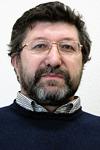Geophysical Monitoring Sector
Responsibilities of the sector
The sector was created to develop a network of geophysical observations under the scientific and methodological guidance of the Geophysical Center of RAS. The main direction of the work is the collecting, processing, and providing geophysical monitoring data obtained under the guidance or with the assistance of the Geophysical Center of RAS, to the scientific community.
Main directions of the sector's work:
- Creation of a national geomagnetic data node at the GC RAS servicing Russian INTERMAGNET observatories
- Transmission of magnetograms from functioning Russian INTERMAGNET observatories to the GC RAS in real-time mode;
- Publication of pattern recognition algorithmic software on the Web;
- Maintenance of storage of Russian observatory magnetograms in databases.
- Research aimed at solving the fundamental scientific problems of geomagnetism
- Statistical analysis of the series of geomagnetic observations;
- Development and support of regional geomagnetic activity indices;
- Preparation of final data from Russian magnetic observatories.
- Development and installation of software and hardware complexes that allow solving actual applied tasks of geophysics
- Development of tools and services for obtaining operative geophysical measurement data;
- Integration of processing algorithms and modern geophysical models into the web resources of the GC RAS;
- Development of tools for the recognition of magnetic anomalies and assessment of magnetic disturbances.
Relevance of the research
The conduct of geophysical research and the development of geophysical models are inseparable from the improvement of data measurement and processing methods. Despite the constant increase in the number and quality of measurements provided by research satellites in near-Earth space, ground-based continuous measurements remain the most accurate and long-term series of observations in many areas of geophysics. Regular geophysical instrumental observations began more than 400 years ago and have become an integral part of applied and fundamental scientific research.
The organization of the first magnetic observatories dates back to Gauss. The founder of Earth's magnetic field modeling realized the need for continuous observations of the magnetic field in specially equipped magnetic observatories. The most important step towards building a global observation network was the International Geophysical Year. During the IGY, more than 1000 magnetic observatories were launched around the world. The system of World Data Centers, organized during the IGY, became the prototype of modern data storage repositories. It anticipated the ideas of distributed storage and the exchange of scientific information. The growing scientific and applied importance of high-precision geomagnetic observations led to the emergence of the international network of magnetic observatories INTERMAGNET in 1991. Since the formation of the INTERMAGNET network, the criteria for the quality of network observation data have become the de facto standard when used in modeling the Earth's main magnetic field.
The sector oversees the creation and expansion of the Russian segment of the global INTERMAGNET network.
In collaboration with the Laboratory of Geoinformatics and Geomagnetic Studies, the sector created and has developed the national geomagnetic data node at GC RAS, servicing Russian INTERMAGNET observatories. Its particular feature is the implementation of an automated system for the recognition of artificial disturbances on incoming magnetograms (APK MAGNUS). The INTERMAGNET network is the basis for geomagnetic field monitoring, so requirements for the reliability of collected data are very high. Therefore, an important task is the objective and formalized recognition and further elimination of possible technogenic anomalies in data records. The algorithms SP and SPs for spike detection and the JM algorithm for recognition of baseline jumps are designed for processing data recorded with 1 minute, 1 second and less sampling rates.
The algorithmic system was created for the first time with the use of fuzzy mathematics for geomagnetic records. It enables the production of filtered, despiked magnetograms from preliminary data almost without human intervention.
Web resources
- The Analytical Geomagnetic Data Center;
- Final data from Russian magnetic observatories;
- Space weather parameters;
- Virtual Magnetograms.
 Senior research scientist, PhD
Senior research scientist, PhDMikhail Matveev
 Junior research scientist, Doctor of Science Geophysics
Junior research scientist, Doctor of Science GeophysicsIliya Firsov
 Senior research scientist, PhD
Senior research scientist, PhDAndrey Kotikov
 Senior specialist
Senior specialistVyacheslav Kabrov
 Leading engineer
Leading engineerKatkov Vyacheslav
 Leading engineer
Leading engineerDmitry Sapronov
 Engineer
EngineerPavel Borodin
 Engineer
EngineerNikolay Vershinin
 Engineer
EngineerMikhail Nanov


 Leading research scientist, Chief, PhD
Leading research scientist, Chief, PhD Leading research scientist, PhD
Leading research scientist, PhD Senior research scientist, PhD
Senior research scientist, PhD Senior research scientist, PhD
Senior research scientist, PhD Leading engineer
Leading engineer